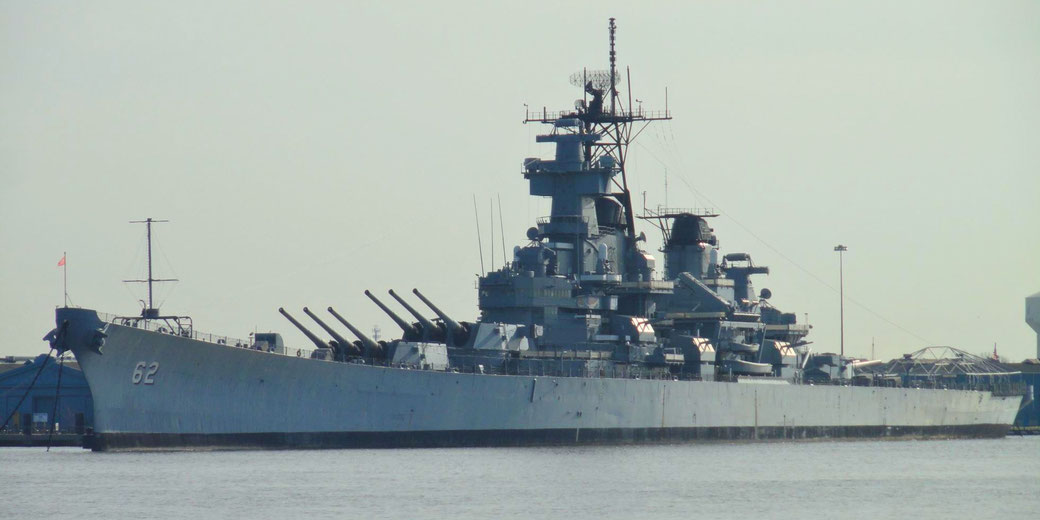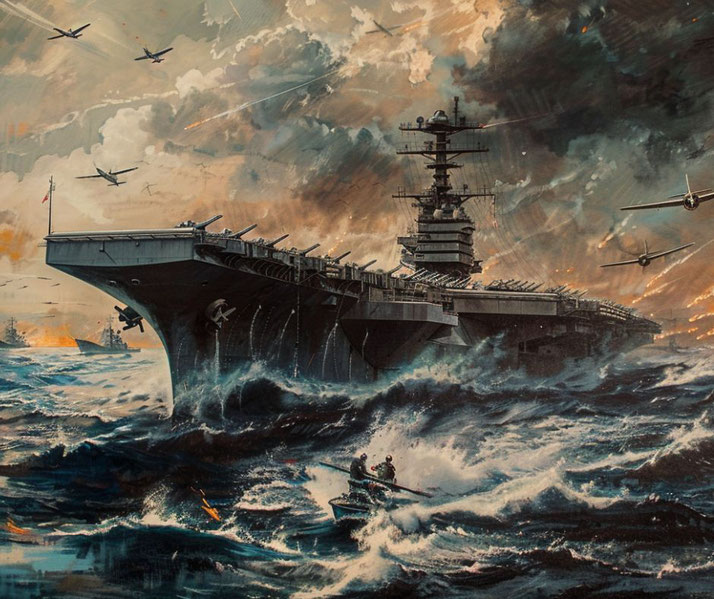How the US turned the tide of WWII at the Battles of Coral Sea, Midway, and Guadalcanal

Unlike the European theatre of World War Two, which is famous for its great land battles, the war in the Pacific was incredibly challenging for both sides, as it was predominantly fought on the sea.
The United States and Japan had to develop new strategies for seeking out and defeating each other across the vast expanses of the Pacific Ocean.
Following the devastating attack on Pearl Harbor in December 1941, Japan enjoyed almost six months of unchallenged dominance in the region.
However, the United States was able to quickly rebuild its naval forces and force their enemies into battle again. For the rest of 1942, three major sea battles turned the tide of the conflict.
Battle of the Coral Sea
The first major Pacific Sea battle between the US and Japanese navies after Pearl Harbor occurred near Australia, in the Coral Sea.
It was fought between May 4–8, 1942. In the previous month, the end of April 1942, the Japanese were poised to seize control of the Coral Sea in order to extend their defensive perimeter in the South Pacific.
Their main interest was to control Papua New Guinea. On the 3rd of May, the Japanese had landed troops at Tulagi in Papua New and sent their ships into the Coral Sea.
They were heading towards its capital city of Port Moresby, intending to support their troops in their attack.
However, an American task force, which was comprised of US and one Australian ship, under the command of Admiral Frank Jack Fletcher was ready to intercept them.
This would be the first ever naval battle in history where both sides fought without ever directly sighting each other's ships.
On May 5 and 6, 1942, opposing carrier groups sought each other and, on the 5th of May, the Japanese had their first success.
Dive bombers from one of their aircraft carriers, the Shoho, sank the American carrier USS Lexington.
However, neither side were still entirely certain where each other's fleets were exactly and how large each force was.
Then, on the morning of May 7, the two groups finally located and launched successive attacks.
Across the course of the day, the Americans had the greatest success when they destroyed two Japanese ships and damaged two Japanese carriers, the Shokaku and the Zuikaku.
The Allies had lost one of their own carriers and two more were damaged. However, the Japanese ships were further away from resources and so, retreated from the Coral Sea.
This was a clear strategic victory for the Allies. It stopped the Japanese advance in the Coral Sea and many thought that it saved Australia from a possible invasion.
With the loss of sea support, the Japanese attempt to capture Papua New Guinea would now focus on a land campaign that would become known as the Battle of the Kokoda Track.

Battle of Midway
Despite the setback in the Coral Sea, the Japanese still had a powerful fleet and were fully aware of the growing power of the American navy.
In response, they chose to be proactive and try to deal another decisive blow on the US as they had tried to do at Pearl Harbor.
Admiral Isoroku Yamamoto, the architect of the Japanese attack on Pearl Harbor, was placed in charge of a new attack on the island atoll of Midway in the middle of the Pacific.
To do this, the Japanese wanted to set a trap for the United States fleet: they would attack the island of Midway, which was a crucial American military base.
However, it was relatively isolated, and it was hoped that by attacking it, the United States would send their new ships to defend it.
The trap worked, and when news of the impending attack reached the United States, they did indeed dispatch their fleet.
However, the US Pacific Fleet’s commander, Admiral Chester Nimitz, had been warned of Japanese attack plans since the Japanese secret military code had been cracked.
So, Nimitz also knew that it was a trap, but was provided a detailed list of the size and strength of the Japanese forces.
He chose to bring in two aircraft carrier groups to set an ambush for the Japanese, which would become one of the largest naval engagements of the entire war.
The Battle of Midway was fought from June 4th to 7th in 1942, which was just six months after the attack on Pearl Harbor.

On the morning of the 4th of June, American dive-bomber planes were able to disable three Japanese carriers in the space of about five minutes.
By the end of the first day, the Japanese had lost all four of their aircraft carriers (Akagi, Hiryu, Kaga, and Soryu), as well as 248 aircraft and over 3,000 men.
In comparison, the Americans suffered approximately 307 casualties, and just one aircraft carrier, the USS Yorktown, which was sunk on the 7th of June.
This was a decisive victory for the Americans and crippled the Japanese navy. It would never again regain its dominance in the Pacific.
Not only did it halt the Japanese advance in the Pacific, but it also allowed the United States to transition from a defensive posture to a more aggressive strategy.
This would be the start of a series of offensive operations.
Battle of Guadalcanal
As US control of the Pacific slowly increased following the Battle of Midway, the American forces started targeting key islands to drive back the Japanese.
To achieve this, they relied upon both the navy, but also the ground forces. One of the most important locations at this time was Guadalcanal in the Solomon Islands.
In August 1942, the United States had landed Marines on the island of Guadalcanal and were trying to build an airstrip, called Henderson Field.
Henderson Field, once built, was intended to be a launching point for future air operations against Japanese positions.
However, the Japanese were trying to stop them, which started the Battle of Guadalcanal from August 7th to November 9th, 1942.
Throughout August, the Japanese navy and air force continually bombed and attacked the American forces who had no place to hide on the small island.
However, this seemed to have little effect, as the construction continued. So, the Japanese made several attempts to land soldiers on Guadalcanal, but they were always fought off, resulting in high casualties.
Then, during September, the Japanese changed tactics and began shelling the island at night from their destroyer battleships.
These nightly attacks came so regularly, that they were nicknamed the 'Tokyo Express' by the US forces.
However, the Japanese were never able to achieve any success. They suffered significant losses, including thousands of soldiers and critical naval resources, for no tactical benefit.
Running low on resources, and with less ability to sustain operations in the South Pacific, by November, the Japanese finally gave up and retreated.
The United States was victorious, and they were able to complete the construction of the airstrip on the island.

How did America win the war in the Pacific?
As a result of these three sea battles in 1942, the United States navy was able to take strategic control of parts of the Pacific once more.
While the Japanese still controlled import locations in the west, including Singapore, the Philippines, and several major island, the devastation of their navy meant that they were increasingly limited in their capacity to supply and support these regions.
Even though the US had effectively stopped the Japanese advancing, it would still take two more years of brutal fighting before they could reach Japan and finally force a surrender.
One of the most important lessons these battles highlighted was the industrial capacity of the United States in comparison to the Japanese.
The US were able to replace their lost ships and planes at a pace that the Japanese could not.
Ultimately, America knew that they could win a protracted war in the Pacific based on their ability to out-produce their opponents.
What do you need help with?
Download ready-to-use digital learning resources
Copyright © History Skills 2014-2024.
Contact via email
With the exception of links to external sites, some historical sources and extracts from specific publications, all content on this website is copyrighted by History Skills. This content may not be copied, republished or redistributed without written permission from the website creator. Please use the Contact page to obtain relevant permission.





